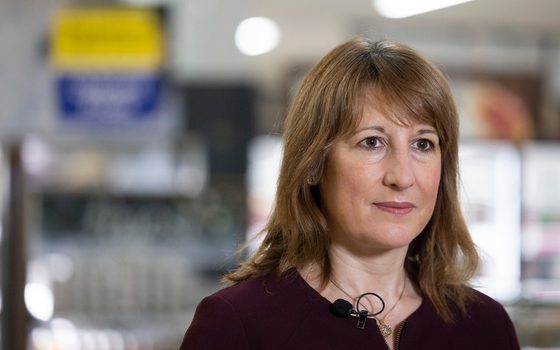OBR’s outdated assumptions hamstring chancellor’s spending power by £8bn a year
Small tweaks to OBR’s “fiscal multipliers” and debt definition would treble chancellor’s spending power
28 October 2024
The Office for Budget Responsibility (OBR) is using flawed assumptions to assess safe levels of public borrowing and spending, reducing the chancellor’s spending power by £8bn a year, according to a briefing from the New Economics Foundation (NEF) published today. A small update to the OBR’s assumptions would be enough to unlock funds to scrap the two-child limit on benefits and bring the homes of all households living in fuel poverty up to a decent standard of warmth.
Today’s research finds that the OBR’s “fiscal multiplier” assumptions – which calculate how many pounds (£) will be added to GDP for each £1 the government spends – underestimate the real-world impact of investment, only look at short-term timeframes, and don’t consider the impact of high-return policies like reducing poverty or investment in infrastructure. These OBR figures are used to forecast how the chancellor’s tax and spending decisions will impact the economy. These forecasts are then used to calculate how much extra space the chancellor has to borrow before breaking the fiscal rules, known as the “fiscal headroom”.
Today’s research finds that if the OBR’s fiscal multipliers were brought in line with International Monetary Fund (IMF) figures, it would unlock an extra £8bn in available public spending. This public spending could be targeted at policies shown to generate the biggest GDP returns: poverty reduction, green technology and infrastructure.
In the run-up to the autumn budget later this month, the chancellor has been rumoured to be reconsidering how public debt is defined in her fiscal rules. One of the more conservative options that Rachel Reeves is considering is switching from a measure of public sector net debt which excludes the Bank of England (PSND ex BoE) to a measure of public sector net debt (PSND) which reduces the impact of the Bank of England’s quantitative tightening and resulting central bank losses on fiscal headroom. OBR figures show that this would increase her fiscal headroom by £16bn.
Today’s briefing shows that if this move were to be combined with adjusting the OBR’s assumptions, this would increase the chancellor’s spending power by £24bn to a total of £33bn, more than triple the space compared to last budget. A less conservative change to debt definitions – for example, changing to “public sector net financial liabilities” (PSNFL) would create significantly more headroom.
Dominic Caddick, economist at the New Economics Foundation, said:
“The toxic combination of our fiscal rules and how the OBR assesses we meet them has been a blocker to the revitalisation of the UK’s ailing public services and infrastructure for the last 14 years. The OBR’s flawed assumptions provided justification for the use of austerity policies to manage public debt, decimating our public services and holding back GDP growth. Today’s government risks repeating the mistakes of the past. It’s time to rethink how we calculate the value of public spending. A small change to the OBR’s assumptions would unlock billions to boost our economy and people’s living standards.”
Notes
The New Economics Foundation is a charitable think tank. We are independent of political parties and committed to being transparent about how we are funded.
The briefing, The OBR’s fiscal powers need a rethink, will be available at https://neweconomics.org/2024/10/the-obrs-fiscal-powers-need-a-rethink
NEF analysis of the OBR’s March 2024 Economic and Fiscal Outlook. OBR figures imply that a move to a debt target based on Public Sector Net Debt (PSND), would have increased the chancellor’s headroom at the March 2024 Spring Statement from £8.9bn to £24.9bn, an increase of £16bn. https://obr.uk/docs/dlm_uploads/E03057758_OBR_EFO-March-2024_Web-AccessibleFinal.pdf
If this headroom was ‘spent’, by borrowing £24.9bn extra a year, it would imply a debt-to-GDP ratio of 98.9% by the end of the OBR’s forecast. However, this implicitly assumes that the extra borrowing has no impact on GDP. Instead, if we allow for different multiplier effects, we can see the chancellor’s spending power increase while the debt-to-GDP ratio stays fixed at 98.9%.
Multiplier effects are found to be as high as 1.5 after five years in the literature in IMF studies on green spending and infrastucture investment, and in research on social security targeted at poverty reduction. Applying a 1.5 multiplier allows for the chancellor’s spending power to increase by £8.2bn.
IMF green spending study: https://www.imf.org/en/Publications/WP/Issues/2021/03/19/Building-Back-Better-How-Big-Are-Green-Spending-Multipliers-50264
IMF infrastructure investment study: https://www.imf.org/en/Publications/WP/Issues/2016/12/31/The-Macroeconomic-Effects-of-Public-Investment-Evidence-from-Advanced-Economies-42892
Poverty reduction study: https://madeusp.com.br/wp-content/uploads/2023/08/wp18_vf_site_att.pdf
NEF costs scrapping the two-child limit at £2.9bn by 2029 – 30 and we estimate upgrading the homes of those in fuel poverty costs under £5bn per year (forthcoming work).
Topics Macroeconomics






